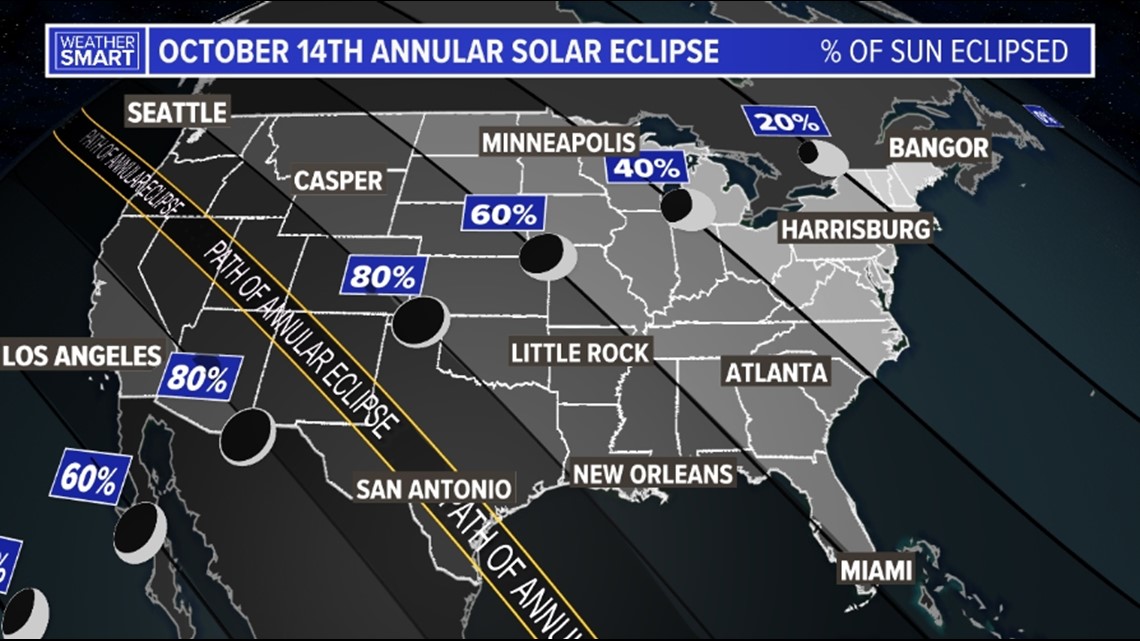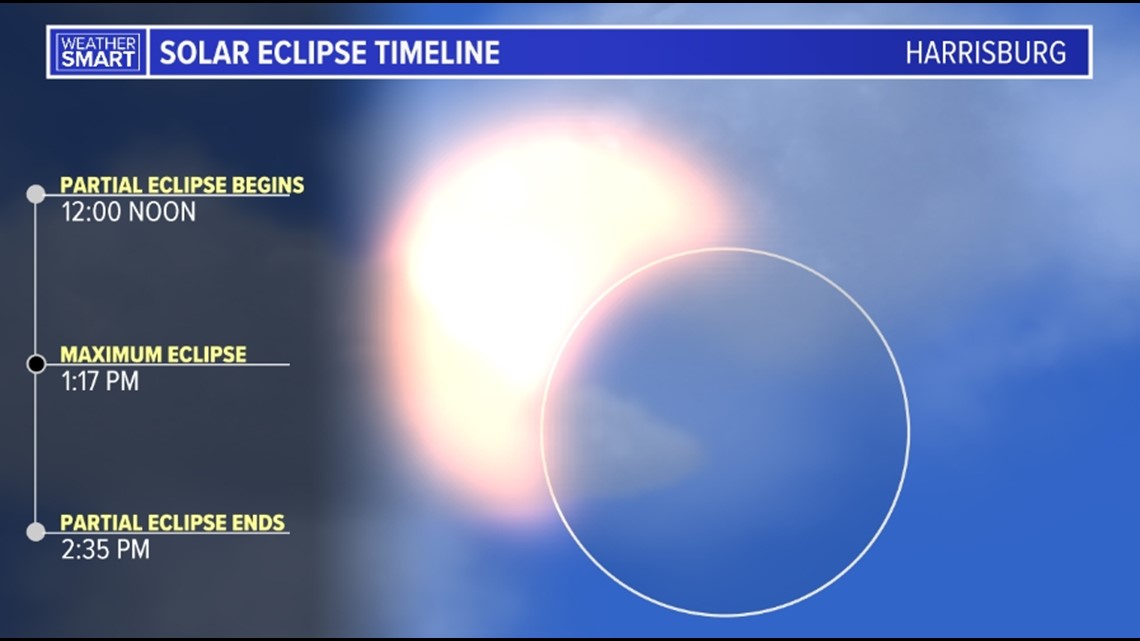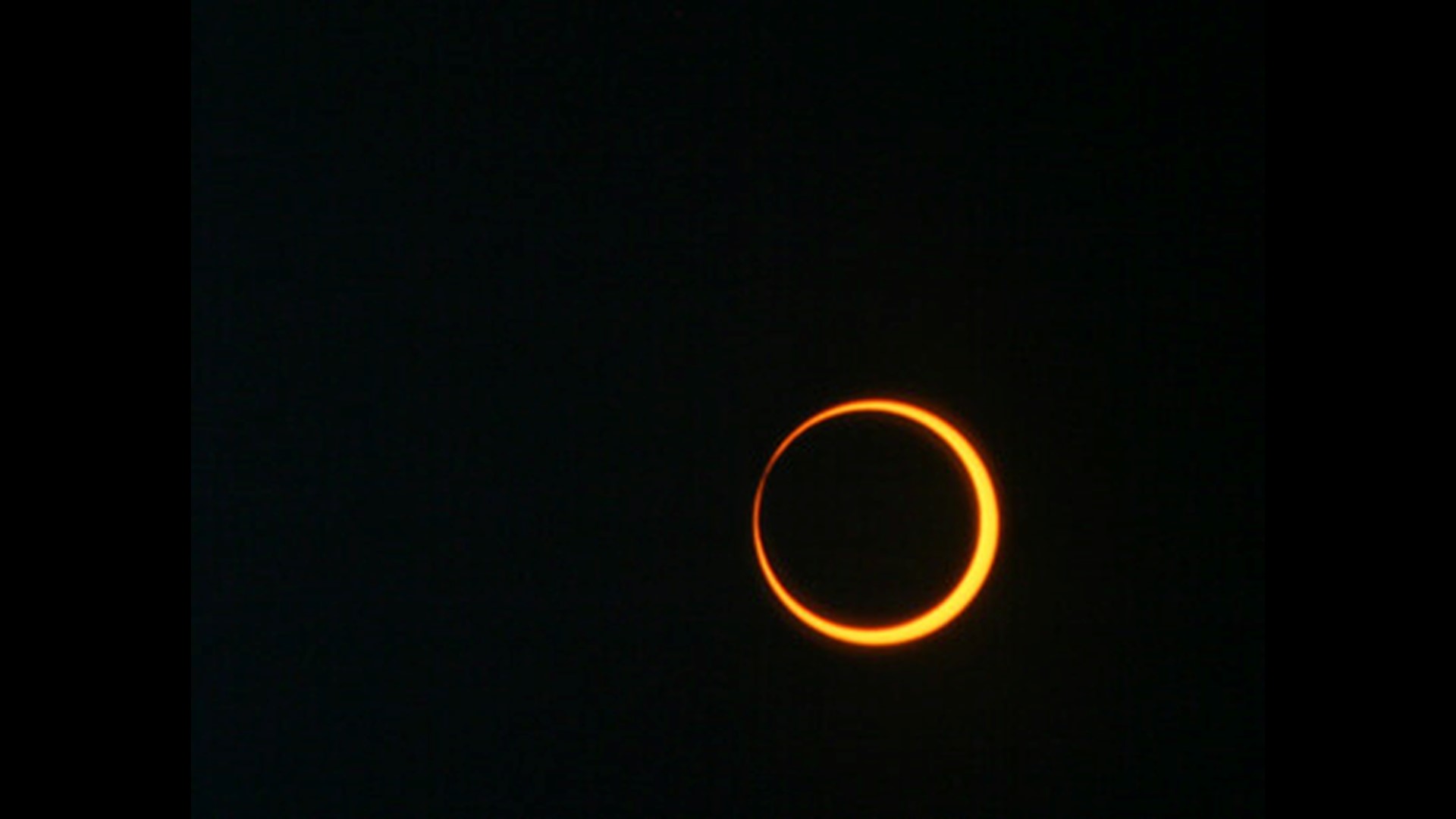PENNSYLVANIA, USA — An annular solar eclipse will take place across North, Central, and South America this Saturday with part of the eclipse viewable here in Pennsylvania.
A solar eclipse happens when the moon crosses between the sun and the Earth and casts a shadow. This year's eclipse is an annular eclipse, meaning the moon will appear smaller than the sun. This will create a "ring of fire" effect of the sun around the moon for those in the path of totality.
In the United States, the path of totality will span from Oregon through Texas. Here in Pennsylvania, only about 30% of the sun will be eclipsed.


In Harrisburg, the partial eclipse will begin at noon with the maximum eclipse taking place at 1:17 p.m. The partial eclipse will end at 2:35 p.m.


Whether the weather will cooperate for Pennsylvanians to view this event is looking questionable. Cloudy skies with rain are likely on Saturday, so viewing conditions will not be ideal.
If you are able to see part of the eclipse between the clouds, safety should be at the top of your mind!
Directly looking at an eclipse can be harmful to your eyes. This includes using a camera lens, binoculars, or a telescope without a special solar filter.
To safely view the event, you can purchase eclipse glasses, which are darker and will protect your eyes. If you don't have access to glasses, there are other methods to indirectly view the eclipse like using a pinhole projector. You can find a full explanation of how to build this on NASA's website.
If you miss out on seeing this eclipse, there will be a total solar eclipse across the United States in April of next year. The path of totality will be much closer and includes northwestern Pa. towns like Erie.

